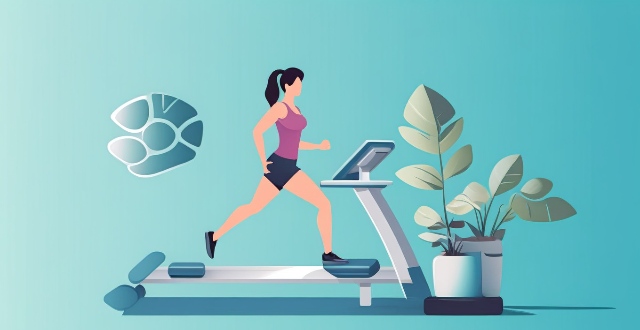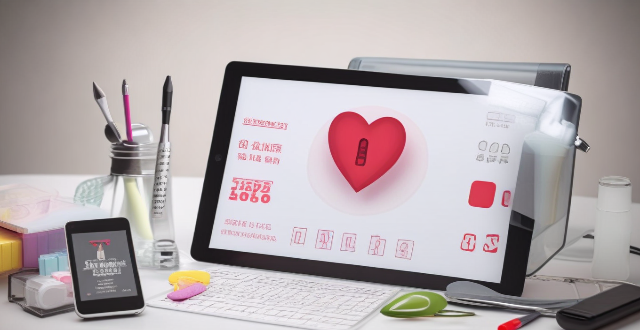Heart Tracking

How do wearable technology devices aid in tracking and managing health through exercise ?
Wearable technology devices play a significant role in tracking and managing health through exercise. They monitor various aspects of physical activity, such as heart rate, steps taken, calories burned, and sleep patterns, providing valuable data for making informed decisions about fitness routines and overall health. Features like goal setting and progress tracking can motivate individuals to stick with their exercise routines and achieve their fitness goals more effectively.

How accurate are wearable devices for tracking physical activity ?
Wearable devices are popular for tracking physical activity, but their accuracy can vary. Step counters are generally accurate, but distance traveled and calorie burn estimates can be affected by individual differences. Sleep tracking features should be interpreted with caution. Heart rate monitoring capabilities may not always be accurate due to external factors. To get the most accurate results, calibrate your device regularly and use multiple sources of data.

What is the significance of GPS tracking in sports management ?
GPS tracking has become an integral part of sports management, providing valuable data that can be used to improve performance, prevent injuries, and enhance training programs. GPS tracking allows coaches and trainers to analyze the performance of athletes during training sessions and competitions by collecting data on speed, distance covered, heart rate, and other metrics. This helps athletes reach their full potential and achieve better results in their sport. GPS tracking can also help prevent injuries by identifying risk factors such as overtraining or improper technique. By monitoring an athlete's movements and biomechanics, coaches can detect any issues early on and take corrective action before an injury occurs. Additionally, GPS tracking can provide insights into an athlete's recovery time after a workout or competition, allowing coaches to ensure that athletes have sufficient rest and recuperation periods between sessions. GPS tracking enables coaches to optimize training programs by providing detailed information about each athlete's fitness level, strengths, and weaknesses. This allows coaches to create personalized training plans that cater to each athlete's individual needs, helping them improve their performance and avoid plateauing in their progress. Furthermore, GPS tracking can help coaches monitor the effectiveness of different training methods and make adjustments as needed to maximize results. In team sports, GPS tracking can be used to develop game strategies based on player movement patterns, ball possession statistics, and other relevant data. Coaches can analyze this information to identify areas where the team needs improvement and devise strategies to exploit opponents' weaknesses. This can lead to more effective gameplay and increased chances of winning. Finally, GPS tracking can be used as a motivational tool for athletes. By setting goals and tracking progress towards those goals, athletes can see tangible evidence of their improvement over time. This can boost their confidence and motivation, leading to even greater success in their chosen sport.

Are there any health benefits to wearing an Apple Watch ?
The Apple Watch offers several health benefits, including heartThe Apple Watch offers several health benefits, including heart recording, fitness tracking, sleep including heart rate monitoring, ECG recording, fitness tracking, sleep analysis, and stress management. However, these features should not replace professional medical advice or treatment.

How do motion tracking devices integrate with sports uniforms ?
Integration of motion tracking devices with sports uniforms can provide real-time data on an athlete's movements, such as speed, acceleration, and direction. This integration can be achieved through wearable tech, embedded sensors, or smart textiles. The benefits of this integration include improved performance analysis, injury prevention, and better athlete management.

What are some common mistakes people make when monitoring their heart rate during exercise ?
When monitoring heart rate during exercise, common mistakes include incorrect sensor placement, over-reliance on technology, misinterpreting data, not tracking recovery time, and ignoring other factors. It's important to wear the sensor correctly, understand technology limitations, consider individual differences, track recovery time, and take environmental and medication factors into account for accurate readings.

What is the best way to monitor heart rate during exercise ?
Monitoring heart rate during exercise is crucial for staying healthy and achieving fitness goals. The best way to monitor heart rate during exercise depends on personal preferences and fitness goals. Wearable heart rate monitors are convenient and non-invasive, while chest straps provide accurate data. Fingertip devices are affordable and easy to use, but less accurate than other methods. Smartphone apps are free or inexpensive, but may not work well in certain situations. Ultimately, the choice between these methods should be based on individual needs and preferences.

How can I use heart rate monitoring to improve my workout routine ?
Using a heart rate monitor can significantly improve your workout routine by providing valuable insights into your body's response to exercise. Here's how you can leverage heart rate monitoring to optimize your fitness regimen: - Understanding Heart Rate Zones: Your heart rate varies depending on the intensity of your workout. By understanding these heart rate zones, you can tailor your workouts to achieve specific goals, such as fat burning, endurance building, or performance improvement. - Setting Goals Based on Heart Rate: Establish clear objectives for each workout session based on your heart rate data, such as endurance training, weight loss, or performance enhancement. - Tracking Progress: Consistently monitor your heart rate during workouts to track progress, including recording resting heart rate and assessing recovery time. - Adjusting Intensity: Modify your workout intensity based on your heart rate feedback, such as increasing intensity if you're consistently below your target heart rate zone or decreasing intensity if you're above it. - Preventing Overtraining: Use heart rate data to avoid overtraining by staying within recommended heart rate limits and recognizing signs of overexertion. - Personalizing Your Workouts: Customize your routine with heart rate in mind by incorporating different training methods and experimenting with different activities to see which ones give you the desired heart rate response.

How can I monitor my heart rate during exercise for optimal health results ?
Monitoring your heart rate during exercise is crucial for efficiency, safety, and progress tracking. Tools include heart rate monitors, smartphone apps, fitness trackers, and chest straps. Before starting, consult a doctor and choose the right tool. During exercise, wear your monitor, warm up, stay in your target heart rate zone, adjust intensity, and cool down. After exercise, record data, analyze results, and rest. Best practices include calibrating devices, staying hydrated, being consistent, and listening to your body.

What are the benefits of monitoring heart rate during exercise ?
Monitoring your heart rate during exercise offers numerous benefits, including improved workout efficiency, better recovery, reduced risk of injury, increased motivation, and improved cardiovascular health. By keeping an eye on your heart rate, you can ensure you're getting the most out of every workout while also taking care of your body.

In what ways can heart rate monitors improve athletic training ?
Heart rate monitors significantly enhance athletic training by enabling targeted intensity, objective data analysis, recovery monitoring, pacing strategies, and individualized training. To use them effectively, athletes should establish baseline measurements, set clear goals, create a structured plan, continuously monitor progress, and incorporate technology for easy tracking and insights.

Can exercise reverse heart disease ?
Heart disease is a major cause of death worldwide, and it can be devastating to those affected. While there are many treatments available for heart disease, including medication and surgery, some people wonder if exercise can reverse the damage caused by heart disease. There is evidence that regular exercise can help prevent and manage heart disease by improving cardiovascular health, managing weight, lowering blood pressure, improving cholesterol levels, and reducing stress. However, there is no conclusive evidence that exercise can completely reverse heart disease. Despite this, there are still many benefits to regular exercise for heart health. If you have been diagnosed with heart disease or are at high risk for developing it, talk to your doctor about starting an exercise program. They can help you create an exercise plan that is safe and effective for your individual needs and goals.

Are there any health concerns associated with prolonged use of sports tracking devices ?
Sports tracking devices have become increasingly popular in recent years, as they allow individuals to monitor their physical activity and fitness levels. However, there are potential health concerns associated with the prolonged use of these devices. One major concern is the excessive reliance on data provided by sports tracking devices. While it is helpful to track your progress and set goals, relying solely on the numbers can lead to a disconnect between how you feel physically and what the device is telling you. This can result in overtraining or pushing yourself too hard, which can cause injuries or burnout. Another issue is the neglect of other aspects of fitness that cannot be measured by sports tracking devices. For example, flexibility, balance, and coordination are important components of overall fitness but are often overlooked when focusing solely on metrics like steps taken or calories burned. This can lead to imbalances in your fitness routine and potentially increase your risk of injury. Prolonged use of sports tracking devices can also cause skin irritation or allergies due to the materials used in the device's construction. Some people may be sensitive to certain metals, plastics, or adhesives used in the device, which can cause redness, itching, or swelling at the site of contact. Additionally, wearing a sports tracking device constantly can create a warm, moist environment on your skin that is ideal for bacterial growth. This can increase your risk of developing infections such as cellulitis or folliculitis, especially if you do not clean the device regularly or give your skin a chance to breathe by removing the device occasionally. Many sports tracking devices also have sleep tracking functionality, which can be helpful for monitoring your sleep patterns and identifying areas for improvement. However, relying too heavily on this feature can disrupt your natural sleep cycle and contribute to poor sleep quality. The constant monitoring and analysis of your sleep data can create anxiety around getting enough rest, leading to increased stress levels and further sleep disturbances. Another issue related to sleep disruption is the blue light emission from many sports tracking devices. Blue light has been shown to suppress melatonin production, a hormone responsible for regulating sleep-wake cycles. Exposure to blue light before bedtime can make it more difficult to fall asleep and stay asleep throughout the night. To mitigate these risks, it is recommended to: - Balance Data with Self-Awareness: Use the data provided by sports tracking devices as a guide rather than a definitive measure of your fitness level. Pay attention to how your body feels during exercise and listen to any signs of fatigue or discomfort. - Incorporate Variety into Your Fitness Routine: Include activities that focus on flexibility, balance, and coordination in addition to those that can be tracked by sports tracking devices. This will help ensure a well-rounded fitness routine and reduce the risk of injury. - Maintain Proper Hygiene: Clean your sports tracking device regularly according to the manufacturer's instructions and give your skin a chance to breathe by removing the device occasionally. This will help prevent skin irritation and reduce the risk of infection. - Limit Sleep Tracking and Blue Light Exposure: Be mindful of how much you rely on sleep tracking features and avoid using devices that emit blue light before bedtime. This will help maintain healthy sleep patterns and promote overall well-being.

What benefits can individual athletes gain from tracking and analyzing their performance data ?
Individual athletes can gain numerous benefits from tracking and analyzing their performance data, including improved performance, increased motivation, greater self-awareness, better injury prevention, and more effective recovery strategies. By monitoring their progress, identifying areas for improvement, and making data-driven decisions about their training and competition strategies, athletes can enhance their overall performance and achieve better results.

How does age affect heart rate during exercise ?
Age affects heart rate during exercise by altering the structure and function of the aging heart, reducing maximum heart rate, shifting autonomic regulation towards sympathetic dominance, and decreasing cardiac reserve. Older individuals can still improve their cardiovascular fitness through regular exercise and lifestyle modifications.

What impact does GPS tracking and other monitoring systems have on team strategy and player safety ?
GPS tracking and other monitoring systems have a significant impact on team strategy and player safety. They provide coaches with real-time data on players' movements, speed, and distance covered during training and games, allowing for enhanced performance analysis, optimized training regimens, and improved game planning. Additionally, these systems help reduce injury risk by monitoring physical activity levels and providing feedback on potential overexertion, enhancing recovery processes through post-game analysis, and improving emergency response in the event of an injury. Overall, GPS tracking and other monitoring systems are essential tools for optimizing team performance and ensuring player safety in sports.

Can heart rate monitoring help prevent overexertion during exercise ?
Overexertion during exercise can lead to fatigue, muscle soreness, and injuries. Heart rate monitoring is a technique used to measure the number of times a person's heart beats per minute (bpm). By monitoring your heart rate, you can determine personalized training zones based on age, fitness level, and goals, providing real-time feedback on current heart rate during exercise. Recovery time is essential for preventing overexertion, and heart rate monitoring helps determine how long it takes for the body to return to its resting state. Best practices for heart rate monitoring include choosing the right device, calibrating regularly, warming up properly, staying hydrated, and listening to your body. Following these guidelines and listening to your body can help prevent overexertion during exercise while maximizing its benefits.

Can physical activity reduce the risk of heart disease ?
Regular physical activity can significantly reduce the risk of heart disease by improving blood circulation, strengthening heart muscles, and reducing major risk factors such as high blood pressure, high cholesterol, and diabetes. Recommended types of exercise include aerobic activities and strength training. Following guidelines from health organizations like the WHO can help maintain cardiovascular health.

How accurate are fitness trackers in monitoring heart rate ?
The accuracy of fitness trackers in monitoring heart rate can be affected by various factors, including device quality, skin type and color, movement, and environmental factors. To improve the accuracy of your fitness tracker's heart rate monitor, it is recommended to choose a reputable brand with advanced sensors and algorithms, wear your device correctly, calibrate your device, and use multiple sensors or a chest strap for better results. By following these tips, you can make more informed decisions about your health and fitness goals.

How often should I check my heart rate while exercising ?
Checking your heart rate is an important part of staying healthy and fit. However, how often you should check it depends on several factors, including your age, fitness level, and overall health. Here are some guidelines to help you determine the optimal frequency for checking your heart rate during exercise: For beginners: Check your heart rate every five minutes during the first few weeks of training to get a sense of your target heart rate range and adjust accordingly as you become more comfortable with the activity. For experienced athletes: Once or twice per workout is sufficient for experienced athletes who have established a good foundation in their fitness routine. This will allow them to focus more on their form and intensity without constantly worrying about their heart rate. For older adults or those with pre-existing health conditions: Older adults or those with pre-existing health conditions may need to monitor their heart rate more frequently than younger individuals. It's recommended that they check their heart rate at least once per workout and perhaps even before and after each session to stay safe and ensure they're not overexerting themselves.

What is the ideal heart rate for different types of exercises ?
When it comes to exercise, knowing your ideal heartWhen it comes to exercise, knowing your ideal heartimizing the benefits of your knowing your ideal heart rate is crucial for maximizing the benefits of your workout while minimizing the risk of injury. The recommended heart rate ranges vary depending on the type of exercise and your fitness level. For aerobic exercise, beginners should aim for 50-60% of their maximum heart rate (MHR), intermediate exercisers 60-70% of MHR, and advanced exercisers 70-85% of MHR. High-intensity interval training (HIIT) requires higher intensity, with beginners aiming for 70-80% of MHR, intermediate exercisers 80-90% of MHR, and advanced exercisers 90-100% of MHR. Resistance training also varies by fitness level, with beginners aiming for 50-60% of MHR, intermediate exercisers 60-70% of MHR, and advanced exercisers 70-85% of MHR. Yoga and Pilates are low-impact exercises that focus on flexibility, balance, and core strength, with beginners aiming for 40-50% of MHR, intermediate exercisers 50-60% of MHR, and advanced exercisers 60-70% of MHR. By monitoring your heart rate and staying within the recommended ranges, you can ensure that you're exercising safely and effectively.

Are there any risks associated with constantly monitoring heart rate during exercise ?
Monitoring heart rate during exercise is common but can pose risks like over-reliance on technology, psychological impacts, and physical risks. It's important to find a balance between using heart rate data and listening to your body's signals for a safe and enjoyable workout.

What are the benefits of using a GPS device for cycling routes ?
Using a GPS device for cycling routes offers benefits such as improved navigation, safety and security, performance tracking, and convenience. It provides accurate directions, real-time tracking, and the ability to save points of interest. Safety features include emergency alerts, night riding capabilities, and weather updates. Performance tracking measures speed, distance, elevation gain, and heart rate. Convenience is enhanced with no need for paper maps and automatic routing. Overall, using a GPS device can greatly enhance the cycling experience.

How do I track my package once it has been shipped from another country ?
Tracking an international package involves obtaining the tracking number, using courier websites or third-party services for updates, contacting customer support for assistance, and understanding customs protocols to manage delivery expectations.

Is it safe to start an exercise program if you have a history of heart problems ?
Starting an exercise program is generally beneficial for overall health, but it's important to take precautions if you have a history of heart problems. Here are some factors to consider: 1. Consult with your doctor before starting any exercise program, especially if you have a history of heart problems. 2. Start slowly and gradually increase the intensity and duration of your workouts over time. 3. Choose low-impact exercises such as swimming, cycling, or yoga to improve cardiovascular health without putting too much strain on your heart. 4. Monitor your symptoms during and after exercise, and stop immediately if you experience any symptoms such as chest pain, shortness of breath, or dizziness. 5. Stay hydrated and nourished by drinking plenty of water and eating a healthy diet that includes plenty of fruits, vegetables, whole grains, and lean proteins.

What are the best iPhone apps for fitness and health tracking ?
Staying fit and healthy is essential for a happy life, and with the advancement of technology, there are numerous apps available on the iPhone that can help you track your fitness and health goals. Here are some of the best iPhone apps for fitness and health tracking: 1. MyFitnessPal - A popular calorie counter and diet tracker app that allows you to log your daily food intake and exercise routine. It has a massive database of foods, making it easy to find and track what you're eating. The app also integrates with other fitness apps, such as Apple Health, to provide a comprehensive view of your overall health and fitness. 2. Fitbit - A wearable device that tracks your daily activity, including steps taken, distance traveled, calories burned, and sleep quality. The accompanying iPhone app allows you to view your data in real-time and set personalized goals based on your fitness level. You can also join challenges with friends and compete against each other to stay motivated. 3. Strava - An excellent app for runners and cyclists who want to track their workouts and compare their performance with others. The app uses GPS to map your runs or rides, providing detailed metrics such as pace, speed, elevation gain, and heart rate. You can also join clubs and participate in virtual races to stay motivated. 4. Nike Training Club - Offers a wide range of workout routines designed by professional trainers to help you achieve your fitness goals. The app includes videos demonstrating each exercise, along with tips on proper form and technique. You can also track your progress over time and set personalized goals based on your fitness level. 5. Headspace - While not strictly a fitness app, Headspace is an excellent tool for managing stress and improving mental well-being, which are crucial components of overall health. The app offers guided meditation sessions suitable for beginners and experienced practitioners alike, helping you relax and refocus throughout the day.

How have sensors and tracking devices changed the game for athletes ?
Sensors and tracking devices have revolutionized the world of sports, providing athletes with valuable data to improve performance. These technologies offer enhanced performance analysis, injury prevention, improved training efficiency, data-driven decision making, increased motivation and accountability, competitive advantage, personalized training programs, and contributions to sport science research. As technology advances, we can expect more innovative solutions to enhance the athletic experience.

What types of data do sports performance tracking systems collect ?
Sports performance tracking systems collect a variety of data types, including physiological, biomechanical, technical, tactical, and psychological information. This data can help athletes and coaches analyze performance, identify areas for improvement, and make informed decisions about training and competition strategies. Other information such as environmental conditions, equipment used, and nutrition intake may also be collected to provide a comprehensive picture of an athlete's performance.

What are the best fitness apps for tracking workouts and monitoring progress ?
The text discusses the best fitness apps for tracking workouts and monitoring progress, including: 1. **MyFitnessPal** - Calorie tracker with goal setting and community support. 2. **Strava** - GPS tracking for outdoor workouts with leaderboards and route planning. 3. **Nike Training Club** - Offers workout plans with video tutorials and a variety of exercises. 4. **Fitbit** - Activity tracker syncing data from Fitbit devices with goal setting and food logging. 5. **7 Minute Workout** - Quick high-intensity workouts that can be done without equipment. 6. **Couch to 5K (C25K)** - Beginner-friendly app for starting a running routine with motivational coaches. 7. **Yoga Studio** - Wide variety of yoga classes with customizable and audio options. 8. **Sworkit** - Customizable bodyweight exercise routines with a variety of workouts. 9. **Freeletics** - AI coaching for personalized workout plans and nutrition guidance. 10. **Adidas Runtastic** - GPS tracking with training plans and health metrics.